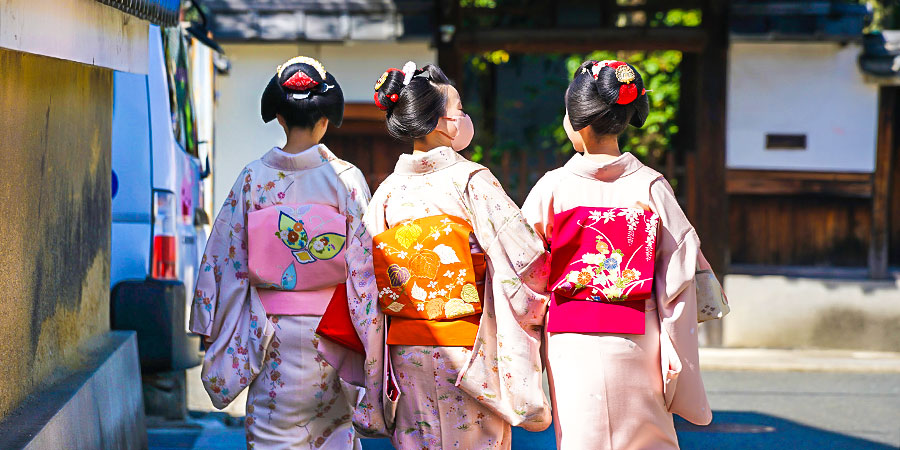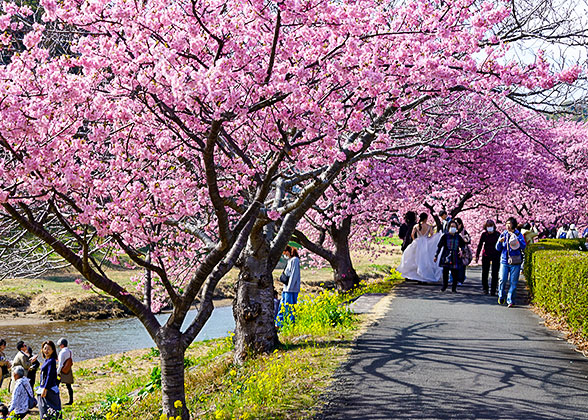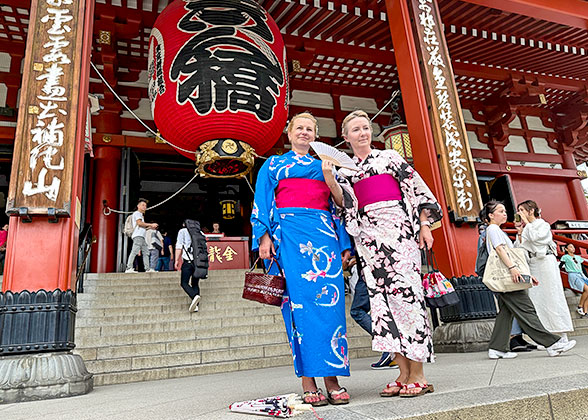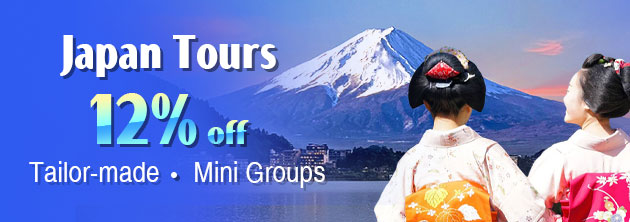Geisha Culture in Japan
Are you curious about geisha in Japan? You may have heard of them, here is a brief introduction to all things you should know when travelling to this oriental country.What is a Geisha?
In Japan, geisha is an old job of female practitioners, who play a role of performers in the restaurants, tea houses, etc. The young girls perform the singing, dances and music in traditional Japanese styles to the audiences after training. Shamisen (a Japanese plucked stringed instrument) is the typical musical instrument that they have to learn well. Performance is a basic skill of geisha, what is presented to tourists, with traditional costume. Actually, it is an industry of service with its long history, as geishas often chat and serve wine, etc. for the guests in high position.

|
Foreigners may be familiar with the name “geisha”, what they are called in Kanto region centered on Tokyo. In Osaka, Kyoto, Kanazawa, and nearby areas, they are called as “geiko”, while geishas still in the training are usually regarded as “maiko”. The name “geigi” becomes popularized as well after Meiji Period (1868-1912 AD).
|
|
|
History of Geisha
In the ancient Japan, the entertainers in public were all male until displaced girls in wartime were trained to entertain guests. It’s supposed that the girl performers appeared in Kyoto at first. It was found that girls were much more popular than the male performers, which brought the host a lot of income. Thus, a new industry to train girls to be geishas arose.It’s said that the first female geisha appeared in public in about 1750 AD. Since then, geisha girls emerged and mushroomed very quickly. They were trained strictly with traditional singing, dances, and musical instruments, to ingratiate the guests.
Up to 1920s, there were still over 10,000 geisha girls in Japan. But after the World War Ⅱ, the industry of geisha declined gradually. A mass of geishas got other better jobs since the wartime, and the number of geishas has tailed off. Although the number of geisha girls is far fewer than before, it has been a protected cultural program to show Japanese culture to the world.
Geiko & Maiko - Two Types of Geisha

Geiko (Right) & Maiko (Left)
|
► Maiko refers to those in training. Younger than geiko, they are involved in the profession not long and haven’t finished their training to be a geisha. They could perform for guests nowadays but they would not be the leading role if an official geiko is there.
In ancient age, geiko and maiko were strictly differentiated, even within the group of geiko or maiko, as they were divided into various grades in accordance with their skills, reputation, records of service/training, years of service, etc. At the present time, such a harsh hierarchy has been eliminated. Even so, there are still some differences to distinguish official geisha from maiko. For example, geiko wear less hair ornaments, simpler kimono with all layers of collars white and short obi (the broad sash) knotted at the back. On the contrary, maiko have a colorful hairstyle with flowerlike hair ornaments, wear kimono with a red back collar and long obi hanging down.
Dressing of Geisha
Regardless of geisha or maiko, they are serious about their clothes, hairstyles and makeup.Fine Kimonos

|
It is laborious to dress well of geisha, as their kimono is pretty heavy and it’s hard to tie the obi sash. For both the long obi of maiko and short obi knotted of geisha, it requires a lot of strength to tie it well. Thus, there are often professionals or even males to help.
Old-Fashioned Hairstyles
The hairstyles of geisha in Edo Era (1603-1868 AD) have been preserved. A kind of highly adhesive hair cream is applied and the hair is coiled up in a large bun high on the top of the head. The hair is also fixed with a silk ribbon, making the bun full and upright. The silk ribbon is slightly exposed out of the bun, as the color of ribbon indicates the rank of the geisha. Younger maiko often use red ribbons, while formal geisha use ribbons with patterns on. Kanzashi (traditional hairpins) with flowerlike dangling ornaments are often put on by maiko, too.In the Edo period, a hairdresser was essential to make such a hairstyle. The hair could be maintained for a few days, afterwards, geisha and maiko had to redo their hair. In order to prevent the hairstyle distorted, geisha needed to sleep in her round pillow on a high, specially-made, hollow wood block. They might lie on one side, then the hair was not affected. After the 1950s, it has been popular for geishas to wear wigs instead of their natural hair, so that they could sleep well. However, maiko are demanded to do their own hair all the time.

Makeup of A Geisha
|
Makeup to Perform a White Face
Geisha have a special procedure to make up with traditional cosmetics. The most striking is that geisha paint their face and neck with a white paste pigment, which could be dated back to the Heian Era (794-1192 AD) when the white paste was mixed with rice powder and water. Up to now, geisha smear pink foundation makeup around their eyes, bridge of the nose, cheekbones, the middle of forehead and chin at first. After, they would paint their neck and then the face white. Sometimes, they would leave a blank pattern at the back rather than paint the whole neck white; and the pattern, looking like three or two “V”s, stands for their ranks in the profession.Later, they will pencil the eyebrows as well as put on red eye lines and eye shadows. Geisha prefer to red eyes and lips on the white face, which makes girls more charming in Japanese aesthetics.
Where can find a geisha today? Geisha Districts
Kyoto, full of fantasies about geisha, is typical of geisha culture throughout Japan. Gion district, the largest geisha district in Kyoto and Japan, rise to fame for geishas and has been specified as a historic protection area since 1999 for a number of architecture in the early 19th century.In Tokyo, Asakusa, Akasaka, Kagurazaka, Shimbashi, etc. are also relatively well-known areas for geishas. In addition, some geisha districts scattered all over the country, especially in some onsen towns, struggle to inherit the geisha culture, even though they are less renowned than Kyoto largely.
It's to be noted that, behave politely if you want to take photos of a geisha when you come across one on the street or meet at the venue for a performance. Traditionally, it's not allowed to take photos and videos of geisha without a permission, while spectators of the performance can get a chance to take pictures with the geisha on the spot.




